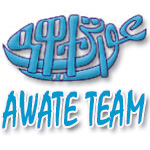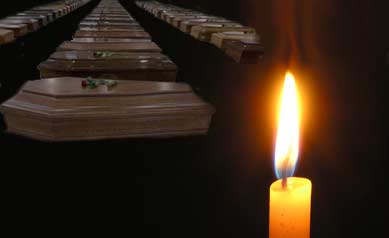Behind Isaias Afwerki’s Crocodile Tears About Human Trafficking
 Eritrea’s self-declared president sent a letter to UN Secretary General Ban Ki-Moon to complain that Eritrea has been the “target of malicious and concerted practices of human trafficking” for the “past ten years or so” and since Eritrea has “statutory obligations as well as universal morale [sic] and humanitarian responsibilities” to put an end to it, he requests that the UN conduct “an independent and transparent” investigation. Since Eritreans have been victimized by human traffickers for the “past ten years or so”, why is Isaias Afwerki demanding an investigation now?
Eritrea’s self-declared president sent a letter to UN Secretary General Ban Ki-Moon to complain that Eritrea has been the “target of malicious and concerted practices of human trafficking” for the “past ten years or so” and since Eritrea has “statutory obligations as well as universal morale [sic] and humanitarian responsibilities” to put an end to it, he requests that the UN conduct “an independent and transparent” investigation. Since Eritreans have been victimized by human traffickers for the “past ten years or so”, why is Isaias Afwerki demanding an investigation now?
There is, from the standpoint of the UN, already “an independent and transparent” investigative body: it is called the Monitoring Group on Somalia and Eritrea (UNSEMG). The results of its “independent and transparent” investigations were published in July 2011 and then again in June 2012. Here are the relevant excerpts (paragraph 77 – 86) from the UNSEMG report* of June 27, 2012:
77. In its July 2011 report, the Monitoring Group described the involvement of senior members of the Eritrean security services, notably General Teklai Kifle “Manjus”, in the trafficking of weapons and people from Eritrea into Egypt (the Sinai) via Sudan, en route to Israel. The trafficking of arms and people is managed by the same networks using the same vehicles, and the same Eritrean officials are implicated.
78. The Monitoring Group has since learned that this activity exists on a much greater scale than previously believed. According to the Population, Immigration and Border Authority of Israel 58,088 asylum seekers entered Israel through the Israel-Egypt border between 2006 and February 2012. Of these, 56.5 per cent (or 32,082) were from Eritrea. Statistics of the Office of the United Nations High Commissioner for Refugees (UNHCR) indicate a much higher figure, with 59,969 Eritreans entering Israel via Egypt between 2009 and 2011.
79. The experiences of these asylum seekers are well documented. NGOs in Israel have recorded over 1,300 testimonies from African asylum seekers, more than half of which are from Eritrea. Of these, 61 referred to Rashaida and Bedouin traffickers by name, often describing the physical and psychological torture they inflicted on their captives.
80. Multiple independent sources in Israel and the Sinai have identified General Teklai Kifle Manjus, and Colonel Fitsum Yishak (see S/2011/433, para. 262 (b)), as well as a string of intermediaries, as being directly responsible for the cross-border smuggling of humans and weapons from Eritrea.
81. A sample of transcripts from interviews with Eritrean migrants is contained in annex 2.2.
82. Trafficking operations begin in western Eritrea, under the auspices of General Manjus. According to a former translator for a smuggling network in the Sinai, weapons for export were organized in 2011 by two military officers under the command of Manjus named Borhame [Berhane] and Yesef Hadegu [Yosief Hadgu]. The former translator stated as follows: “Manjus gets all the money. They don’t get anything. They are in the military so they just do what they are told” (see annex 2.2.).
83. The weapons are generally described as Kalashnikov-pattern assault rifles and rocket-propelled grenades. Many bear the inscriptions of the Eritrean military units to which they previously belonged. The weapons are driven across the border via Teseney to Wadi Sharifay, where they are delivered into the hands of Rashaida trafficking networks at a reported cost of approximately $250 per rifle. They are sold in Egypt to Palestinian brokers at a much higher price.
84. From Sudan, Rashaida smugglers sell space on trucks to Eritrean migrants for an average fee of $3,000. They have also been known to abduct refugees from camps in eastern Sudan. The trucks are loaded with weapons and ammunition, and the passengers and their goods ride on top to conceal the cargo.
85. To transit Egypt, Rashaida smugglers hand the migrants over to Bedouin traffickers. However, instead of delivering the passengers to their destination, the traffickers routinely hold their passengers captive and demand exorbitant ransoms from their families for their release — typically between $30,000 and $50,000. If ransom is not paid, hostages may find themselves brutally tortured or killed. Some Bedouin smugglers have told their captives that they will remove and sell their vital organs if payment is not forthcoming.
86. One prominent Sinai-based trafficker, known as Abu Ahmed, reportedly used to take delivery of at least 1,200 small arms per month, as well as large quantities of ammunition. The value of this trade to General Manjus’s network would therefore be worth a minimum of $300,000 per month or $3.6 million per year for weapons alone, excluding ammunition.
So, the question is: why is Isaias Afwerki protesting now and pretending to have an interest in the lives of Eritreans when he has never filed a protest for the last ten years against the countries–Sudan and Egypt–whose citizens are facilitating it? Why is he shedding crocodile tears when he has repeatedly indicated that he doesn’t care that Eritreans are leaving their country at the rate of 400 a week?
The most likely answer can be found in the itinerary of the Monitoring Group. It is in New York, briefing the Security Council. If past history is a guide, it has found that the human trafficking network is more wide-spread and the Eritrean regime’s involvement is deeper than indicated in its previous reports. These crocodile tears, then, are an effort to pre-empt a damning report by casting doubts on the integrity and impartiality of the UN Monitoring Group on Somalia and Eritrea. It is an effort by Isaias Afwerki to split the Security Council and appeal directly to China and Russia who have a weakness for tyrant’s pulling their anti-Western strings.
It should be noted here that this is not a case of the UN vs Eritrea. It is not even a case of the UN vs Isaias Afwerki. It is the testimony of Eritrean victims of human trafficking in Israel vs the random letter of Isaias Afwerki. It is Eritrean victims vs Isaias Afwerki. And, between those two choices, we know who is more credible–and it is NEVER Isaias Afwerki.
* You can read the entire report here
awate.com
inform. inspire. embolden. reconcile.



Awate Forum